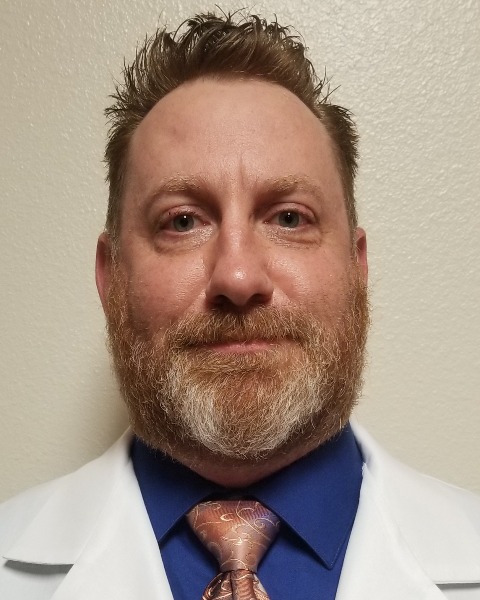Back
Poster Session E - Tuesday Afternoon
E0232 - Black Esophagus: A Case of Acute Esophageal Necrosis Secondary to Binge Drinking
Tuesday, October 25, 2022
3:00 PM – 5:00 PM ET
Location: Crown Ballroom

Corbin Grubbs
Ross University School of Medicine
Norwalk, Connecticut
Presenting Author(s)
Introduction: Acute esophageal necrosis (AEN) is a rare, potentially life threating and under-diagnosed syndrome that presents most commonly with upper GI bleeding, hematemesis, and abdominal pain. Here we present a case of an otherwise healthy, middle-aged man with coffee ground emesis who had classic findings of black, necrotic, ulcerative esophageal mucosa on esophagogastroduodenoscopy (EGD) after presenting in the setting of binge drinking.
Case Description/Methods: A 47-year-old man with a history of alcohol use disorder presented to the hospital with multiple episodes of coffee ground emesis and epigastric pain. He recently restarted drinking alcohol. He denied any blood thinner use. He was hypertensive and tachycardic on arrival. His physical exam was overall non focal. His relevant lab work included a BUN 24, lactate of 8.3, lipase 11, Hgb 14.5 g/dL; AST, ALT, platelets, and INR were all normal. The patient was treated with IV fluids and started on a PPI drip. A CT scan of the abdomen/pelvis was performed and it was remarkable for nonspecific wall thickening of the thoracic esophagus. The GI service was consulted and an EGD was performed showing a 4 cm hiatal hernia and black mucosal necrosis in the mid and distal esophagus (Figure 1). The patient was made NPO, continued PPI therapy, and cardiothoracic surgery (CTS) was consulted. After gradual symptomatic improvement, he was discharged on lansoprazole, sucralfate, and morphine. He was maintained on a clear liquid diet until outpatient follow up with CTS, at which point his diet was gradually advanced without complications.
Discussion: AEN is a rare condition with an incidence of 0.01-0.28% of patients undergoing EGD. The pathophysiology is usually multifactorial due to ischemic injury, gastric acid exposure and impaired mucosal repair mechanisms. Multiple medical comorbidities such as diabetes, hypotension, and alcohol abuse have been associated with an increased risk of developing AEN. In our case, binge drinking, and emesis likely contributed to AEN in an otherwise healthy patient. Management is largely supportive with hydration and acid suppression but can include surgery or balloon dilation if the course is complicated by perforation or stricture formation. Prompt performance of an EGD with timely referral to CTS is recommended for risk stratification and to guide follow up management. Repeat EGD is warranted after a month to document healing.
Case Description/Methods: A 47-year-old man with a history of alcohol use disorder presented to the hospital with multiple episodes of coffee ground emesis and epigastric pain. He recently restarted drinking alcohol. He denied any blood thinner use. He was hypertensive and tachycardic on arrival. His physical exam was overall non focal. His relevant lab work included a BUN 24, lactate of 8.3, lipase 11, Hgb 14.5 g/dL; AST, ALT, platelets, and INR were all normal. The patient was treated with IV fluids and started on a PPI drip. A CT scan of the abdomen/pelvis was performed and it was remarkable for nonspecific wall thickening of the thoracic esophagus. The GI service was consulted and an EGD was performed showing a 4 cm hiatal hernia and black mucosal necrosis in the mid and distal esophagus (Figure 1). The patient was made NPO, continued PPI therapy, and cardiothoracic surgery (CTS) was consulted. After gradual symptomatic improvement, he was discharged on lansoprazole, sucralfate, and morphine. He was maintained on a clear liquid diet until outpatient follow up with CTS, at which point his diet was gradually advanced without complications.
Discussion: AEN is a rare condition with an incidence of 0.01-0.28% of patients undergoing EGD. The pathophysiology is usually multifactorial due to ischemic injury, gastric acid exposure and impaired mucosal repair mechanisms. Multiple medical comorbidities such as diabetes, hypotension, and alcohol abuse have been associated with an increased risk of developing AEN. In our case, binge drinking, and emesis likely contributed to AEN in an otherwise healthy patient. Management is largely supportive with hydration and acid suppression but can include surgery or balloon dilation if the course is complicated by perforation or stricture formation. Prompt performance of an EGD with timely referral to CTS is recommended for risk stratification and to guide follow up management. Repeat EGD is warranted after a month to document healing.
